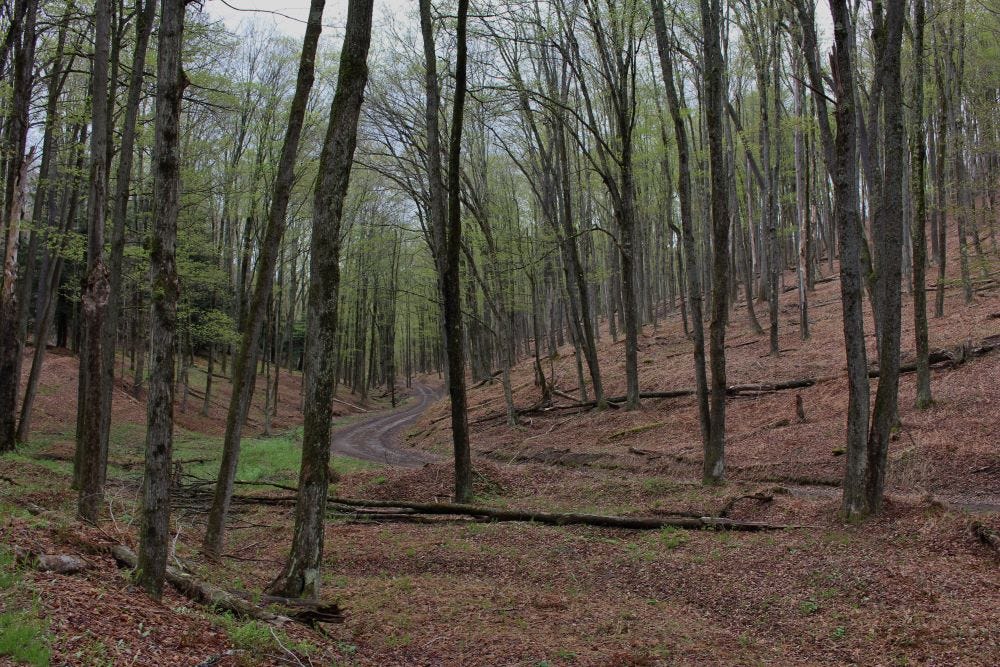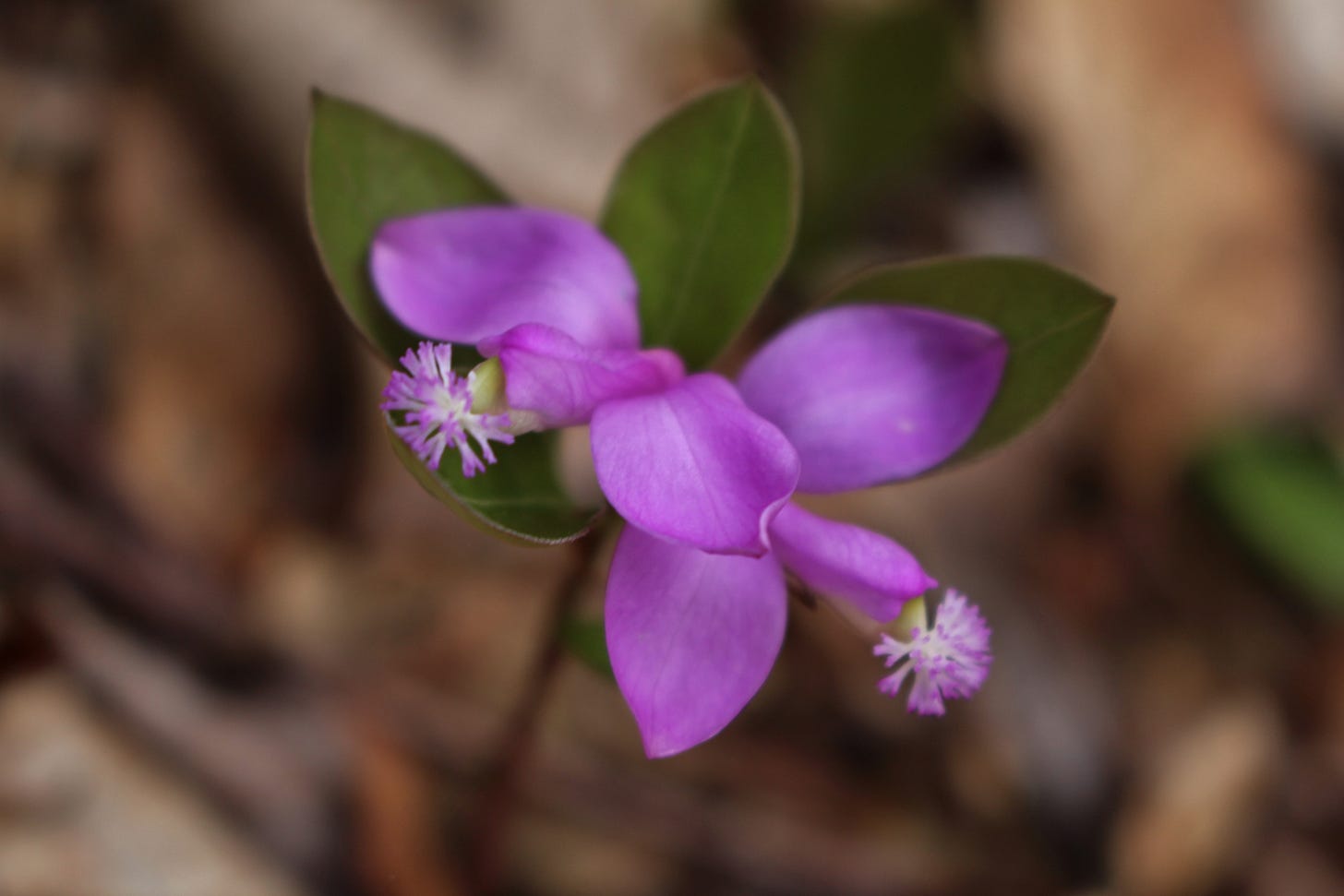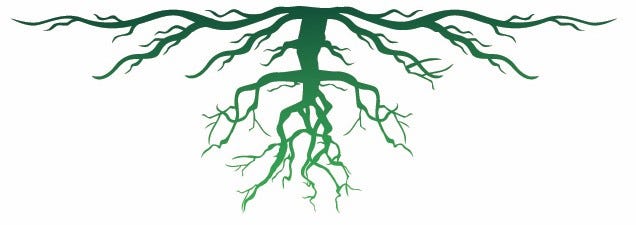Sometimes you read something and a quote hits like a body slam. First, a short trip down memory lane and then the quote Jim O’Donnell shares which you should most definitely think about. Continue reading, 023 - Hazards and Vulnerabilities.
Walking is Risky
Years ago, I was granted a guide permit in Pennsylvania. Under the regulations I was required to have insurance and once the permit was signed, I sent an email requesting an Additional Insured certificate to my coverage provider. Then G called and advised that my policy would not cover me in Pennsylvania. “They have some unique laws, and we have a blanket no coverage there,” she said apologizing. I should have taken this as a red flag.
Phone calls followed. I spoke with agents in Pennsylvania and broad umbrella agencies in New York. I called small insurance shops beginning in the communities closest to the trail only to learn I could not get insurance to guide a backpacking trip because backpacking was considered a risky1 endeavor.
“You walk and camp out for fun?” the last agent I spoke with asked. I countered with, “Walking is risky?” “Mostly it is because you are sleeping in the wild,” he finally conceded. Please insert the soapbox beneath my feet so I can stand a bit higher, because here is the rub. Maybe spending time outside and walking can be perceived with an unpredictable outcome. Maybe the variables of putting one foot in front of the other blended with the collective memory of environment knowledge is insufficient.
Let’s see if I can dial down the rant. Why do we discourage the human population to stand and walk from one place to another. “Why walk, it is risky?” I can hear people say. Safer to drive or sit on the couch. Instead, prescribe pills, avoid creating walkable communities, open our public and private lands to mechanized use but blanch at allowing walkers on those spaces. Our social structure actively discourages and even reduces space for walkers.
Come to find out, if I were organizing a 24-hour motorized bike race that ran a loop, I could get insurance. I could also get insurance to guide snowmobile tours as riders zoom full throttle on the state maintained groomed trails. But what I could not acquire was insurance to absolve the Commonwealth of Pennsylvania of any responsibility in case one of my clients was injured while walking 88 miles on a well-marked trail, with directional blazes on trees, at a possible high speed of two miles an hour, while camping in tents overnight.
This last agent, speaking in a drawl I was confident was not Pennsylvania based, called his umbrella risk takers and eventually the required insurance was made available. I paid the stupid fee, and my clients and I had a great adventure walking with no mishaps on old railroad grades, through open meadows, along cascading streams, up, then down, steep hillsides into valleys. And we carried all we needed in our fully loaded backpacks. We understood the risks and spent a portion of each day reviewing and evaluating risk – from our individual behaviors and actions to the landscape hazards we were walking through. We knew, if there is an excess of rain, be cautious when crossing the water; look for widow makers before setting up camp; watch for poison ivy when stopping to pee; check for rattlesnakes before sitting down to rest; use sunscreen, bug dope, hydrate, and eat regularly.
In other words: plan, prepare, and get to know your environment.
Hazards and Vulnerabilities
On page 25 of Jim O’Donnell’s, Fountain Creek: Big Lessons from a Little River,2 he quotes Andrew Digmore, a physical geographer at the University of Edinburgh.
There is no such thing as a natural disaster, only natural hazards and human vulnerabilities.
I wonder if we are so enamored with the verbiage of our immediate personal loss that we are too tired for the actual effort to implement change.
I wonder if placing blame is easier than taking responsibility.
I wonder if we can guide ourselves towards long-term beneficial solutions on a planet with eight billion people.
Home is where we amass all our shit. Our photo albums, our favorite heirloom from grandma, the half cow in the deep freezer bought from the local farmer, our prized petunias, and our collection of vinyl with the turntable that has moved with us for forty years. Also, at home there is a cabinet of medicines for our stress headaches and high blood pressure. A brown spotted banana rests in a fruit bowl. Not yet collected from the front door is an Amazon box containing a smart plug, a bottle of Mederma Advanced Scar Gel, a tube of LaRoche Posay Toleriane Double Repair Face Moisturizer, a Fire TV Stick, and a TubShroom Ultra Revolutionary Bath Tub Drain Protector.3
On my computer screen I see swimming pools—empty, water evaporated—structures charred, or non-existent with a square footprint evidenced from an arial view and burned out vehicles. What I know exists is a scent that is toxic, a price tag that cannot be truly computed, lives interrupted, and someone sitting in a backroom calculating the profit and loss margins. Behind the loss, and don’t get me wrong, fire, wind, water as recurring natural actions elevated to excess and all powerful are horrible for humans but also for the environment. How do families recover? Where are the resources to build again? Behind the backdrop of pointed fingers I can’t help but wonder, what community will grow back in that space? One that seeks to be in a relationship with the land or one that seeks to dominate what nature for a few moments controlled with a violent assertiveness?
Maybe now is the time to stop placing blame but to hold accountable, beginning with self. We are left in a place of no best choices, just decisions. Climate hoax, climate truth—reality is climate is as it is. Winds blow, rain falls (or it doesn’t), snow accumulates (or it doesn’t), fires begin as from a hesitant strike.
Water changes the land, has always changed the land. She carves, shallows, deepens, and redefines. She needs to run and swell, expects to run and swell, will run and swell.
Fire too changes the land, has always changed the land. He blackens and dissolves, destroys and renews. He sends tendrils then a roar of heat and a colorful inferno towards what is available for charring while he rages to burn until there is nothing less to burn.
Wind howls to gather and move, to relocate what was once here to there.
And yet we blame … because we are stuck in a thinking that what we did is what must be done again. That we must build properties with their toes in the water. That we must construct big homes with inferior products when a smaller footprint will suffice. That community space must be sacrificed for a parking lot, believing there is no economic value, no healthful or ecological benefit, for an outdoor plot of natural to waggle.
How come there are no real natural disasters when I am out in nature? There are things that can happen, things I know to expect, things I know to be aware of, things I look out for, that I consider natural actions and not to be exasperated by their existence. Human frailty exists because we have made it a way of life—to not look beyond the immediate into something of the future. To understand that you are not the center of the universe that there exist variables about which you can make decisions. Weather and nature should not be controlled—the rain did not follow the plow, the aquifers won’t magically refill themselves, we cannot seed enough clouds to create snow on top of a favorite ski area when the weather is warm. Instead, how about demanding balanced restoration. Put the anger, the distrust, the sadness into something better—show up to the conversation and be a reasonable voice in the room. Because with enough voices, the dividing line on a map of home and wildness, feels a little less friction filled.
Natural hazards have always been the nature we have sought to conquer for decades. As we come face-to-face with more natural hazards, and as such are required to consider our own vulnerabilities, lets construct a new relationship, one of co-habitation of relationship. We are not helpless, and we cannot continue to deny our responsibility.
Homework
Grab a chair, walk out to the end of your driveway, and sit. Look, really look at your place of living. Write a list of the natural hazards. What makes you vulnerable to those hazards?
References
1 O’Donnell, Jim. Fountain Creek: Big Lessons From A Little River. Torrey House Press, 2024.
2 Risky Definition & Meaning - Merriam-Webster
3 It saddens me that I am not going to get the time back for a quick looksee at the top selling items on Amazon in 2024. 24 most purchased Amazon products we covered in 2024. This list is compiled from NBC Select Readers.
Wendell Berry’s, The Need to Be Whole
We are digging into this tome of a book and sharing thoughts with a weekly essay. Be a part of the conversation.
Read This
I don’t often offer the more read authors for this space, but today I have to feel okay with sharing Mr. McKibben’s resource rich essay on the climate.










Stacy, fantastic piece. There's so much I want to say I'll respond with an essay and tag Crooked Roots if that's okay.
I really like the Jim O'Donnell quote as well as your comment on it: "How come there are no real natural disasters when I am out in nature? There are things that can happen, things I know to expect, things I know to be aware of, things I look out for..." Both quotes are a nature-centered rather than a human-centered way of looking at the world.